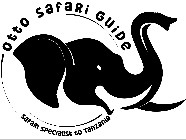Ngorongoro Conservation Area, nestled in Tanzania’s northern Crater Highlands, is a renowned safari destination within the Serengeti ecosystem. Embracing UNESCO World Heritage status since 1979, this vast expanse spans 8,292 square kilometers, boasting magnificent grass plains, acacia woodlands, and crater-filled highlands. Let’s delve into the richness of Ngorongoro’s history, wildlife, and the best times to visit this natural marvel.
Ngorongoro’s Rich History
Ancient Occupation: Occupied by hominid species for approximately three million years, Ngorongoro’s history is etched in fossil evidence found at Olduvai Gorge and Laetoli. Formed by a volcanic eruption around the time of Australopithecus afarensis, the region transitioned to the domain of pastoralist tribes, including the Mbulu, Datooga, and the Maasai in recent times.
European Arrival and Conservation: European presence began in 1892, leading to the establishment of Ngorongoro Conservation Area in 1976. Recognized as a UNESCO World Heritage Site in 1979, it uniquely balances wildlife preservation with human cohabitation, fostering harmony.
The Majestic Ngorongoro Crater
Nature’s Masterpiece: The centerpiece of Ngorongoro is the colossal Ngorongoro Crater, the world’s largest inactive volcanic caldera. Stretching 16-19 km in diameter and formed 2.5 million years ago, it showcases open grasslands against a forested volcanic rim, earning its reputation as Africa’s Garden of Eden.
Wildlife Wonderland: Home to around 25,000 large animals, the Crater is a wildlife haven. The Big Five—rhino, elephant, lion, buffalo, and leopard—reside here, with the elusive black rhino being a prized sighting. Large herds of buffalo, old elephant bulls, and Africa’s densest population of lions make the Crater a safari enthusiast’s dream.
Diverse Fauna: Beyond the Big Five, the Crater teems with hyenas, jackals, cheetahs, wildebeest, zebras, Thomson’s and Grant’s gazelles. Water-dense areas like Ngoitokitok Springs and Gorigor Swamp host pods of hippos.
Avian Abundance: Over 500 bird species grace the Ngorongoro highlands, with Lake Magadi in the Crater attracting flamingos. Resident birds like the Black kite and Kenya rufous sparrow, coupled with migratory species, create a birdwatcher’s paradise.
Weather and Best Times to Visit
Climate Insights: With a temperate climate, Ngorongoro experiences a noticeable temperature drop as altitude increases. The dry season (June-October) sees average afternoon temperatures of 19°C, while the wet season (November-May) warms up to around 23°C.
Ideal Visit Times: While June-October is considered the prime season due to shorter grass and predictable weather, the wetter months (November-May) offer a greener landscape and fewer crowds. The Crater’s enclosed nature ensures exceptional wildlife viewing throughout the year.
Navigating Seasons: During the wet season, short rains (November-December) bring occasional showers, while long rains (March-May) mark higher rainfall. Despite these, safaris can be planned to avoid disruptions.
Embark on a safari adventure in Ngorongoro Conservation Area, where nature’s wonders unfold in a harmonious blend of history, wildlife, and breathtaking landscapes.
